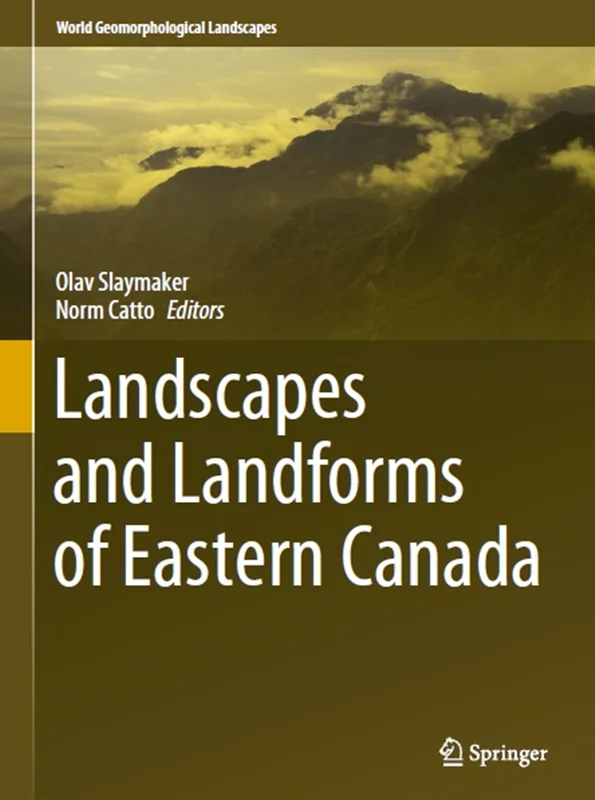مناظر و فرم های زمین شرق کانادا
Landscapes and Landforms of Eastern Canada | Olav Slaymaker, Norm Catto | ISBN: 3030351351, 978-3030351359, B084TZTB7Q
سال انتشار: 2020
تعداد صفحات: 597
زبان فایل: انگلیسی
فرمت فایل: pdf
حجم فایل: 89MB
ناشر: Springer
This critical book focuses on the geomorphological landscapes of eastern Canada and provides a companion volume to “Landscapes and Landforms of Western Canada” (2017). There are a number of unique characteristics of eastern Canada’s landscapes, notably its magnificent coastlines, the extraordinary variety and extent of wetlands, the huge Great Lakes-St. Lawrence basin, the high incidence of meteorite craters, the spectacular Niagara Falls, urban karst in Montreal and Ottawa, youthful, glaciated karst in Ontario, Newfoundland, Quebec and Nova Scotia, the ubiquitous permafrost terrain of Nunavut, Labrador and northern Quebec and the magnificent arctic fjords and glaciers.
Looking at coastlines, the tidal extremes of the Bay of Fundy are world renowned; the structural complexity of the island of Newfoundland is less well known, but produces an astounding variety of coastlines in close succession; the arctic fjordlands of Baffin and Ellesmere islands and the extravagant raised beaches of Hudson Bay bear comparison with the classic fjords of Norway and the Baltic Sea raised beaches. As for wetlands, there are distinctive Arctic, Subarctic, Boreal, Eastern Temperate and Atlantic wetlands, and their extent is second only to those of Russia. In the Hudson and James Bay regions, between 75-100% of the terrestrial surface is comprised of wetlands. One of North America’s largest river basins, the Great Lakes-St. Lawrence basin, has its source in Minnesota, straddles the USA-Canada border and debouches into Quebec as the St. Lawrence River and evolves through its estuary into the Gulf of St. Lawrence, a journey of almost 5,000 km. As far as meteorite craters are concerned, 10% of the world’s total are located in eastern Canada, including some of the largest and most complex landforms. They are preserved preferentially in the ancient Shield terrain of Quebec. Finally, the three million km² of permafrost controlled relief in eastern Canada serves as a reminder of the vulnerability of eastern Canada’s landscapes to climate change. Effects of warming are expressed through thawing of the permafrost, disruption of transportation corridors and urban construction problems, ever-present geomorphic hazards.

